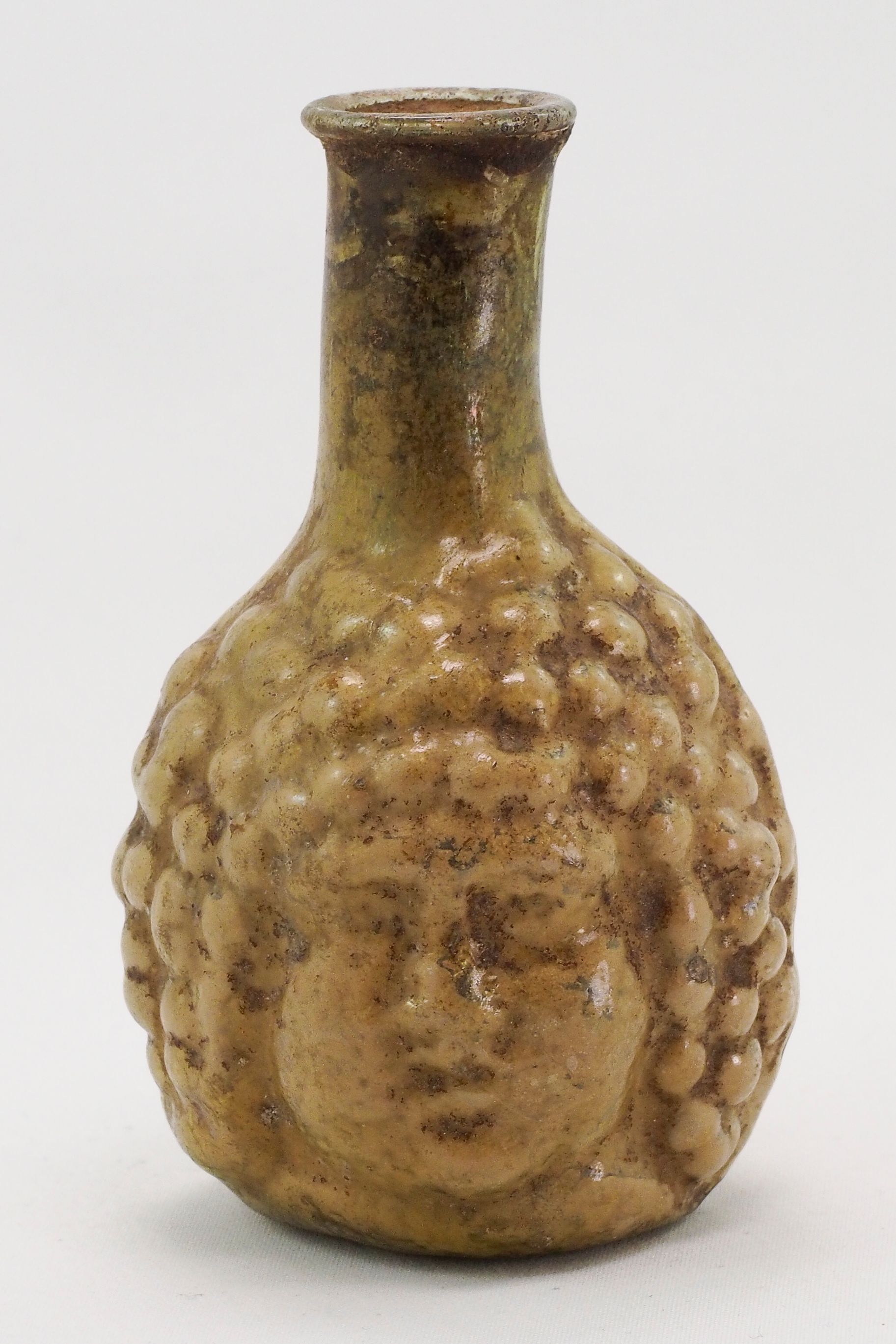Janiform Flask
Name/Title
Janiform FlaskEntry/Object ID
11NE-Mi54-190Description
Tubular rim folded outwards. The cylindrical neck has a slight bend to one side. The body is globular, in the shape of a double head. Each face is framed by evenly spaced knobs imitating hair, four rows on side A and three rows on side B. Side A: Face is long and rectangular, narrow deep set eyes, chubby cheeks, slim nose, small mouth, and prominent chin. It is the larger side when measuring the head's depth. Side B: Face is round, prominent brow, wide nose, wide deep set eyes, wide mouth and a less prominent chin as if the mouth and nose did not fully impress into the mold. The mold seam can be seen where the heads were joined, partially concealed by the hair. The base is flat, with no seam on the bottom and a collection label to the flat base. Intact, some iridescence.Use
CosmeticContext
Dual faced vessels are often categorized as Janiform vessels; the categorization derives from the very ancient two-faced Roman god, Janus. Depictions of Janus himself are often of an older bearded man, representing the past, and a younger clean shaven man, looking to the future. Head flasks often resemble young chubby boys with curly or knobby hair. The faces of children on double headed flasks typically possess the same stylized characteristics: bulging eyes with sunken centers, a prominent nose, cheeks, and lips, with hair in rows of bulbs, the first of which typically resembles a fillet (a hair accessory used to pull the hair out of one's face). These boys likely represent Eros (Cupid), the god of love, or Dionysus (Bacchus) the god of wine, although it is unclear which of the two these vessels represent as they are often both depicted as children. These flasks were particularly popular throughout the Syro-Palestine area in the third century CE which could indicate that the vessel represents Dionysus as in myths he is traditionally thought to have been brought up in the Syro-Palestine area and was popularly worshiped there during the second and third centuries CE.Made/Created
Date made
200 CE - 400 CETime Period
Roman Imperial, Late AntiqueEthnography
Culture/Tribe
Near Eastern - Syro-Palestine

